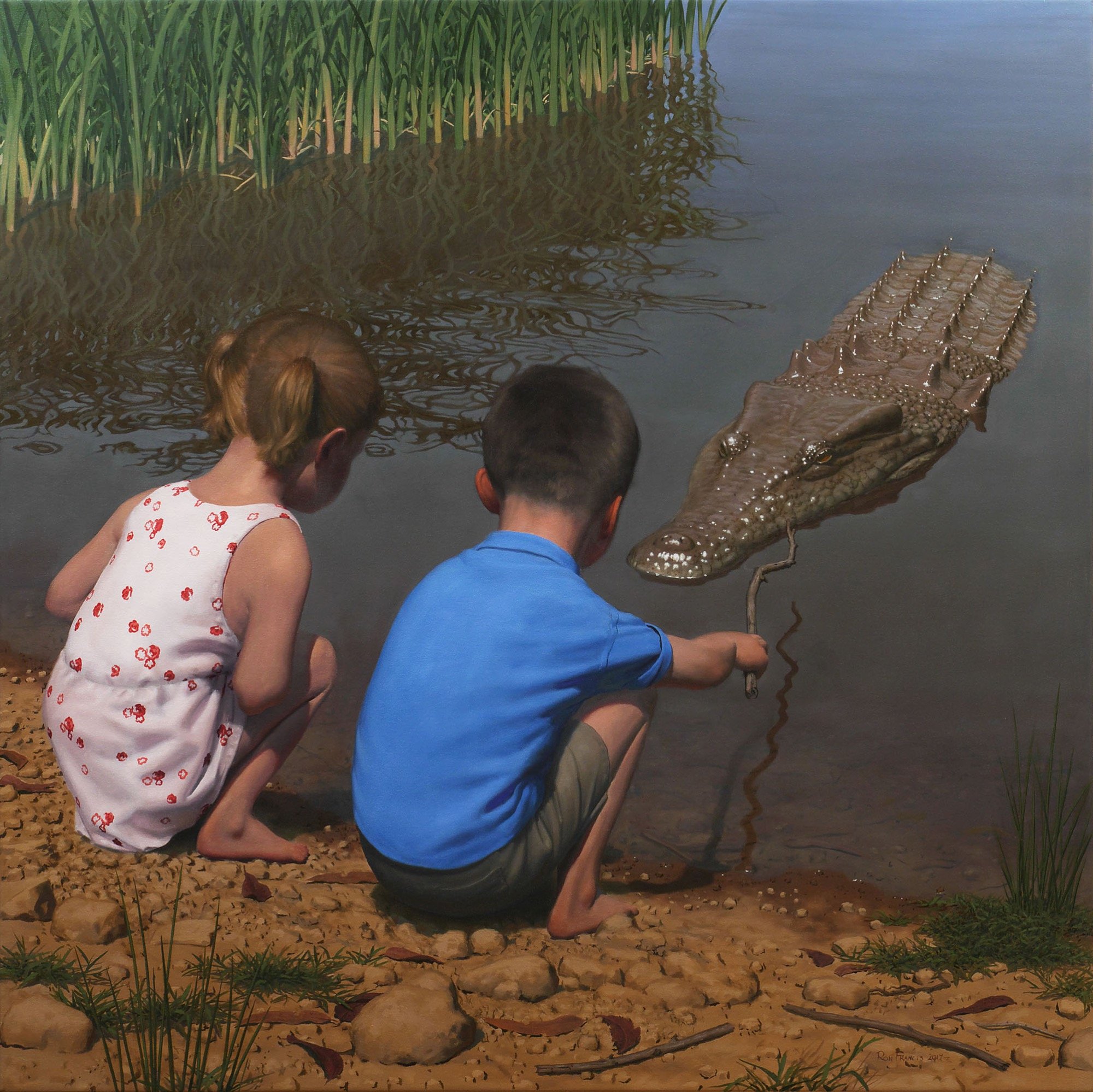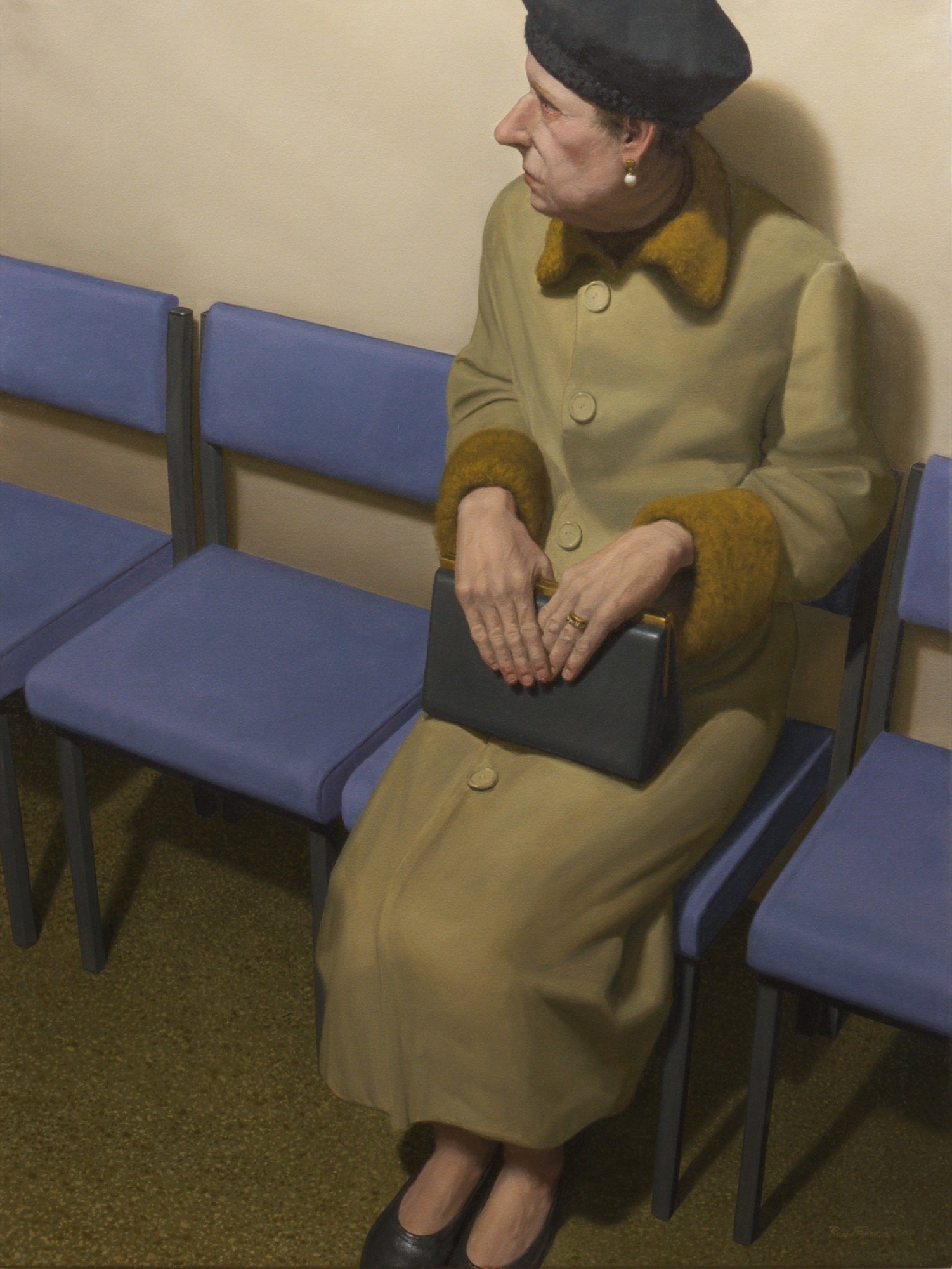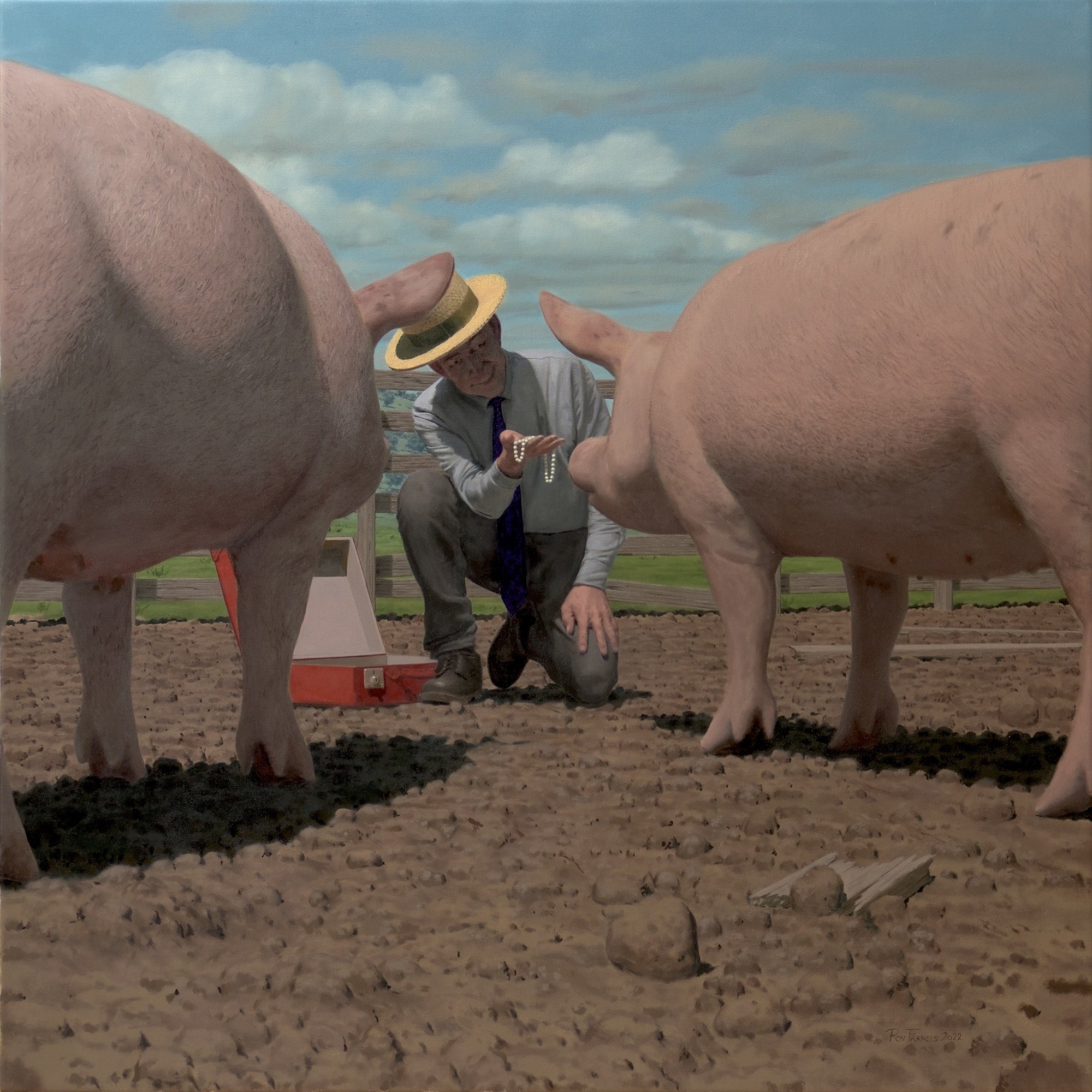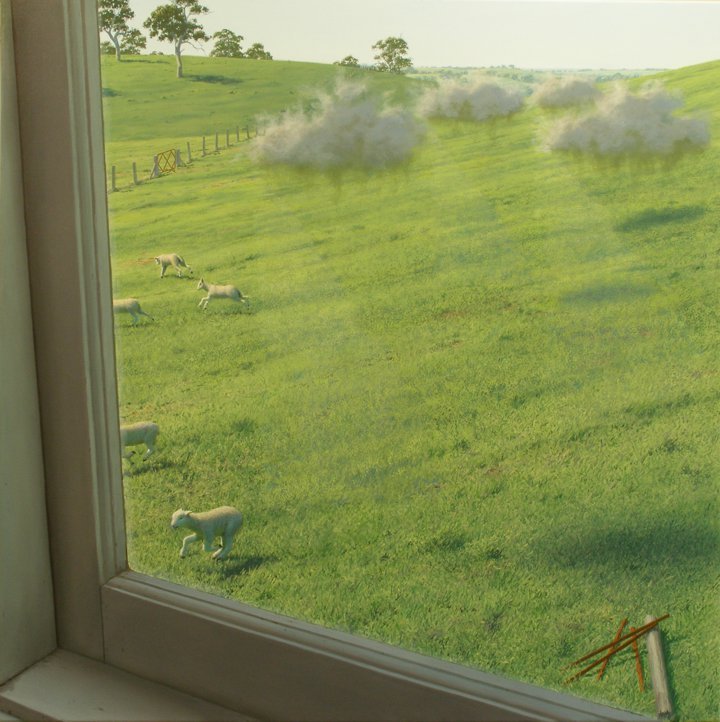A Waking Dream: Tasmania-Based Artist Ron Francis
BY ART & DESIGN SUB-EDITOR ELLIOTT NIMMO
▼
At three o’clock in the morning, Tasmania’s skies are inky and festooned with stars: one of the small glories of living on an island with a tiny population and very low pollution. If you step out during the summer months, you might glimpse daubs of pink and green aurora. You might also catch a shooting star. If you were Ron Francis, however, you wouldn’t see any of it – because at three o’clock in the morning, your eyes would be trained on a large canvas, your hand holding a brush loaded with oil paint. Painting in the early hours is a perfect situation for the Cygnet-based artist: he could be the only painter on the island, free from the day’s distracting energies.
Self Portrait, Ron Francis
Ron’s paintings are masterfully rendered images drawn from his dreams - wry commentaries on our world with an adeptly practical execution. There is a sense, too, that they aren’t set quite in our time, which prompts an uncertain nostalgic quality: some scenes feature men and women clad in suits and dresses from the fifties or sixties; in other paintings, people look as if they’ve stepped out of the suburbia of 2003. The surreal edge, however, is certain. We don’t know quite what world we’re in, and we’re caught on the precipice of something about to happen. In Walking Leviathan (2017), two children crouch by a river, engaged in a stare-off with an emergent crocodile – the boy holds a stick aloft, poised to poke it. In another painting, Waiting, a woman from another era sits and waits expectantly in a waiting room. Waiting for what? Meanwhile, in Pearls Before Swine (2022), a travelling salesman proffers a string of pearls to two curious pigs. And then there’s 2009’s Strange Little Clouds, which features UFOs disguised as drifting clouds, with alien tractor beams looming over a field of fleeing sheep. This is all witnessed through a window.




For me, the power of these paintings is attributable in no small part to their filmic quality. Ron composes like a cinematographer: whether it’s low, wide shots or full-framed compositions, viewing these paintings is like pausing a still from a movie – and tension is built as we don’t know what will happen once the movie continues to play.
Those familiar with Ron’s work are aware of the collecting frenzy his paintings inspire. The artist, while grateful for the support and attention, is a little sheepish: there is some of the creator’s imposter syndrome in his response. For the viewer, it is near impossible to see why.
Ron was the dark horse in his family. As a child, he drew prolifically, and even went so far as to cover his bedroom walls with drawings of Donald Duck and Mickey Mouse. His parents, surprisingly, had no qualms about it. When we chat on the phone, the subject of talent versus practice inevitably pops up. Ron knew he could do things that other kids couldn’t, but - moreso – he continued where others stopped. His dedication led him to the doors of Sydney’s famed Julian Ashton Art School. A decade later, he developed mathematical formulas and geometries to devise a computer program that would map precise perspectives to apply to his compositions.
This empiricism leads one to think of the ever-curious experiments of da Vinci or Vermeer: a dogged pursuit to create any image perfectly. Ron, however, is reluctant to couch his practice within the confines of art history. When I mention Surrealism or a Realist like Courbet, it’s beside the point. What matters to the artist is transmuting the images from his mind onto the canvas, and rendering them so lifelike as to be impossible to disbelieve.
There are two paintings, however, that were pivotal to his development: Rembrandt’s Bathsheba at her Bath (1654), and Dalí’s Anthropomorphic Cabinet (1936). At the time, Ron was experimenting with new colours, and he decided to make a master copy of Bathsheba. The process revealed to him that every colour Rembrandt mixed in the painting derived from orange. Meanwhile, in Dalí’s composition of a reclining woman, seemingly grief-stricken, with rows of drawers opening down her body, there was a lightning-strike realisation: “Oh. You can express yourself like that.”
Leaving, Ron Francis
Since then, the artist has plumbed his subconscious and pushed his technical skills to the limit to produce a vast body of work. Currently, Ron is ruminating on a composition for a new painting: it’s nearly there, but not quite there enough to get him in front of the canvas. He hopes, though, that he might get out of bed one night and pick up his brush very soon.
You can view Ron’s work at Naarm/Melbourne’s Scott Livesey Galleries.


